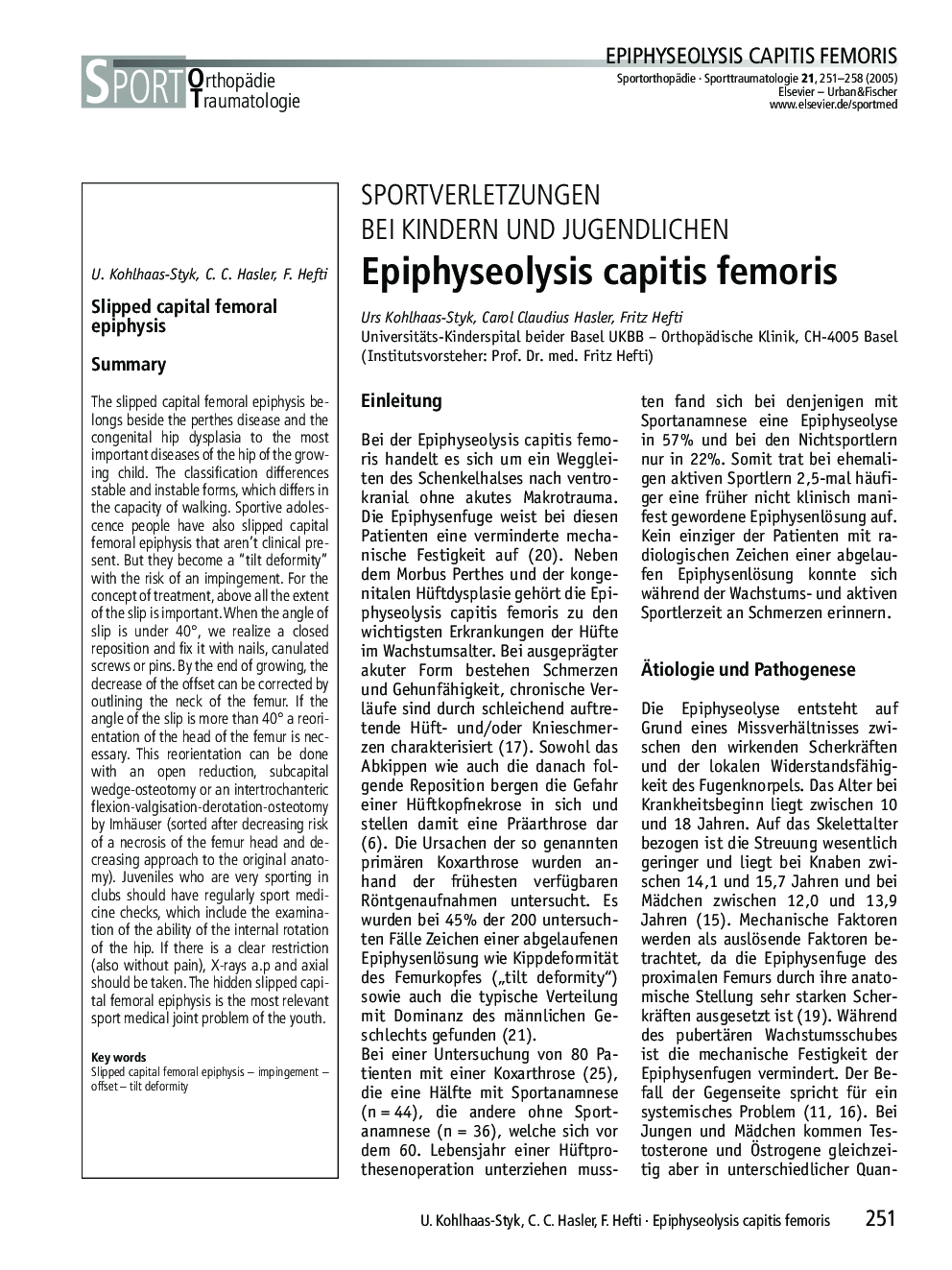| Article ID | Journal | Published Year | Pages | File Type |
|---|---|---|---|---|
| 9089326 | Sports Orthopaedics and Traumatology | 2005 | 8 Pages |
Abstract
The slipped capital femoral epiphysis belongs beside the perthes disease and the congenital hip dysplasia to the most important diseases of the hip of the growing child. The classification differences stable and instable forms, which differs in the capacity of walking. Sportive adolescence people have also slipped capital femoral epiphysis that aren't clinical present. But they become a “tilt deformity” with the risk of an impingement. For the concept of treatment, above all the extent of the slip is important. When the angle of slip is under 40°, we realize a closed reposition and fix it with nails, canulated screws or pins. By the end of growing, the decrease of the offset can be corrected by outlining the neck of the femur. If the angle of the slip is more than 40° a reorientation of the head of the femur is necessary. This reorientation can be done with an open reduction, subcapital wedge-osteotomy or an intertrochanteric flexion-valgisation-derotation-osteotomy by Imhäuser (sorted after decreasing risk of a necrosis of the femur head and decreasing approach to the original anatomy). Juveniles who are very sporting in clubs should have regularly sport medicine checks, which include the examination of the ability of the internal rotation of the hip. If there is a clear restriction (also without pain), X-rays a.p and axial should be taken. The hidden slipped capital femoral epiphysis is the most relevant sport medical joint problem of the youth.
Related Topics
Health Sciences
Medicine and Dentistry
Emergency Medicine
Authors
Urs Kohlhaas-Styk, Carol Claudius Hasler, Fritz Hefti,
